The Cessna 172 Skyhawk Maintenance Manual is a comprehensive guide detailing essential procedures, inspections, and repairs to ensure safe and efficient aircraft operation․ It provides standardized maintenance practices, diagnostic techniques, and compliance requirements for optimal performance and longevity of the aircraft․
1․1 Overview of the Cessna 172 Skyhawk
The Cessna 172 Skyhawk is a widely recognized, four-seat, single-engine aircraft renowned for its reliability and versatility․ As one of the most produced aircraft in history, it has become a cornerstone in aviation training and personal flying․ Designed for durability and ease of handling, the Skyhawk is equipped with a robust airframe and advanced avionics, making it ideal for both novice pilots and experienced flyers․ Its performance characteristics, including a cruising speed of approximately 140 knots and a range of over 800 nautical miles, contribute to its popularity in various flying environments․ This aircraft’s enduring success underscores its value in modern aviation․
1․2 Importance of Regular Maintenance
Regular maintenance is critical to ensure the safety, reliability, and longevity of the Cessna 172 Skyhawk․ It prevents mechanical failures, enhances performance, and ensures compliance with aviation regulations․ Proper maintenance routines, as outlined in the manual, help identify potential issues before they escalate, thereby safeguarding both the aircraft and its occupants․ Neglecting maintenance can lead to compromised safety, increased repair costs, and potential grounding of the aircraft․ Adhering to the recommended schedules and procedures is essential for maintaining airworthiness and ensuring the aircraft remains operational for years to come․
1․3 Structure of the Maintenance Manual
The Cessna 172 Skyhawk Maintenance Manual is organized into sections for easy navigation and reference․ It begins with an introduction, followed by detailed chapters on airframe, engine, avionics, and electrical systems maintenance․ The manual includes schedules, safety practices, troubleshooting guides, and documentation requirements․ Each section provides clear, step-by-step procedures, diagrams, and compliance standards to ensure comprehensive understanding and adherence to maintenance protocols․ This structured approach helps technicians efficiently locate and perform necessary tasks, ensuring the aircraft remains airworthy and operates at peak performance․
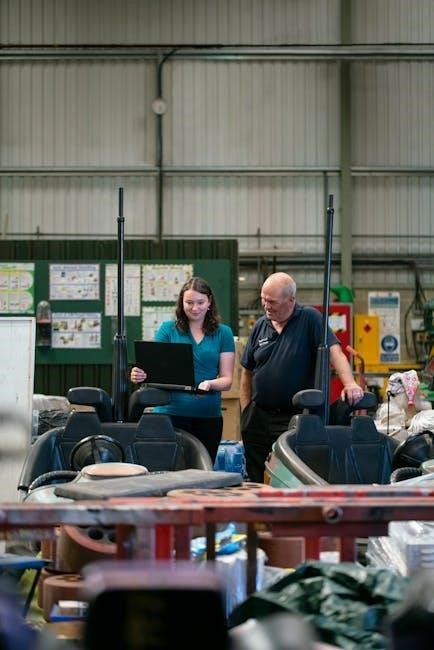
Airframe Maintenance
Airframe maintenance is crucial for ensuring the structural integrity and safety of the Cessna 172 Skyhawk․ It involves regular inspections, repairs, and corrosion prevention to maintain durability and performance․
2․1 Daily Inspections and Checks
Daily inspections are critical to ensure the Cessna 172 Skyhawk is airworthy․ These checks include examining the aircraft’s exterior for damage, wear, or corrosion, verifying control surfaces for proper movement, and inspecting tires, brakes, and fluid levels․ The cockpit should be checked for instrument functionality, circuit breaker status, and seatbelt condition․ Additionally, fuel quantity, oil levels, and propeller condition must be verified․ These routine inspections help identify potential issues early, ensuring safe and reliable operation of the aircraft․
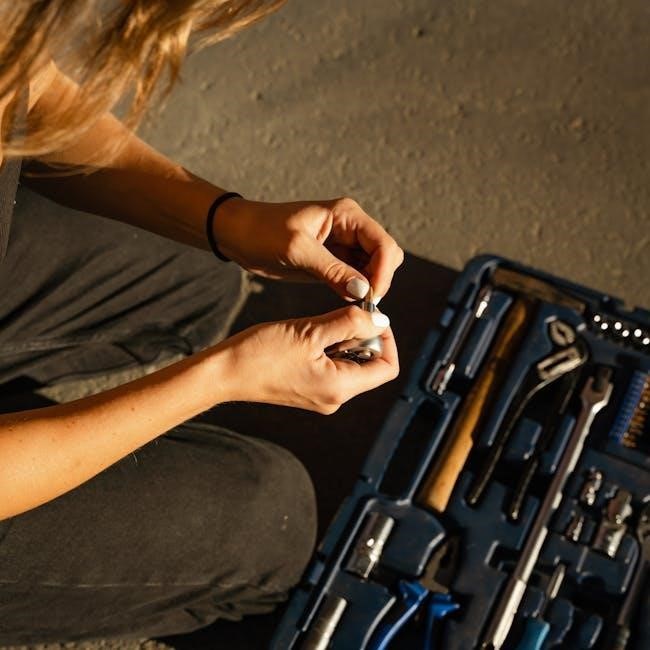
2․2 Structural Repairs and Modifications
Structural repairs on the Cessna 172 Skyhawk require careful assessment to ensure airworthiness․ Damages such as dents, cracks, or corrosion must be evaluated and repaired using approved methods․ Repairs should follow the manufacturer’s guidelines, using appropriate materials and techniques․ Modifications, such as aftermarket upgrades, must comply with FAA regulations and be documented in the aircraft’s maintenance records․ Proper documentation and inspection are crucial to maintain the aircraft’s structural integrity and safety․ Always refer to the maintenance manual for specific procedures and compliance requirements․
2․3 Maintenance of Control Surfaces
Regular inspection of control surfaces, including ailerons, elevators, and rudder, is critical for ensuring proper aircraft handling․ Inspect for damage, wear, or misalignment, and ensure all surfaces move freely without binding․ Lubricate hinges and linkages as specified to prevent corrosion and maintain smooth operation․ Any detected issues, such as excessive play or damage, must be addressed promptly by certified personnel․ Repairs or replacements should strictly follow FAA guidelines and manufacturer recommendations to maintain airworthiness and safety standards․
2․4 Corrosion Prevention and Treatment
Corrosion prevention is vital for maintaining the structural integrity of the Cessna 172 Skyhawk․ Regularly inspect areas prone to moisture, such as wing spars and engine compartments, for signs of corrosion․ Apply protective coatings and sealants to vulnerable surfaces to prevent rust formation․ If corrosion is detected, treat affected areas by removing rust, cleaning, and applying corrosion-inhibiting compounds․ Follow FAA-approved procedures for severe cases, ensuring all repairs comply with airworthiness standards․ Routine maintenance and timely treatment are essential to prevent corrosion-related damage and ensure long-term safety and performance of the aircraft․

Engine Maintenance
Regular engine maintenance is crucial for the Cessna 172 Skyhawk’s performance and longevity․ This includes routine inspections, oil and filter changes, and ensuring proper fuel system functionality to prevent damage and ensure reliability․
3․1 Routine Engine Checks
Routine engine checks for the Cessna 172 Skyhawk involve thorough inspections to ensure optimal performance and safety․ These checks include monitoring oil levels, inspecting filters, and verifying coolant levels․ Additionally, examining the propeller for damage and ensuring proper fuel flow is essential․ Regular inspection of engine mounts, belts, and hoses for signs of wear or leaks is also critical․ These procedures help identify potential issues early, preventing costly repairs and ensuring compliance with FAA maintenance standards․ Consistent adherence to these checks maintains engine reliability and contributes to overall aircraft safety․
3․2 Oil and Filter Changes
Regular oil and filter changes are vital for maintaining the Cessna 172 Skyhawk’s engine health․ The manual recommends using approved oil types, such as Shell AeroShell or Phillips 66, and replacing the oil filter every 50 hours of operation․ Proper disposal of used oil and filters is essential to comply with environmental regulations․ Ensure the oil drain plug is torqued to specifications, and the filter is securely tightened․ Always refer to the manual for specific torque values and procedures․ These practices help prevent engine contamination, reduce wear, and ensure optimal performance during flight operations․
3․3 Propeller Maintenance
Propeller maintenance is critical for ensuring smooth engine operation and flight performance․ Regular inspections should be conducted every 50 hours to check for damage, erosion, or excessive wear․ Lubricate the propeller hub according to the manual’s specifications to prevent corrosion and ensure proper function․ Additionally, propeller balancing is required if vibrations are detected during flight․ Always follow the manufacturer’s guidelines for repair or replacement of damaged blades or components․ Proper maintenance extends the propeller’s lifespan and ensures optimal aircraft efficiency and safety during operation․
3․4 Fuel System Inspection and Cleaning
The fuel system inspection involves checking fuel tanks, lines, and components for damage, leaks, or contamination․ Regularly drain fuel samples to inspect for water, debris, or discoloration․ Clean fuel screens and filters as recommended to ensure proper flow and prevent blockages․ Use approved cleaning agents to remove contaminants without damaging system components․ Inspect fuel tank vents for obstructions and ensure all connections are secure․ Address any issues promptly to maintain fuel system integrity and prevent potential engine malfunctions․ Always follow FAA guidelines and manufacturer instructions for a thorough and safe inspection process․
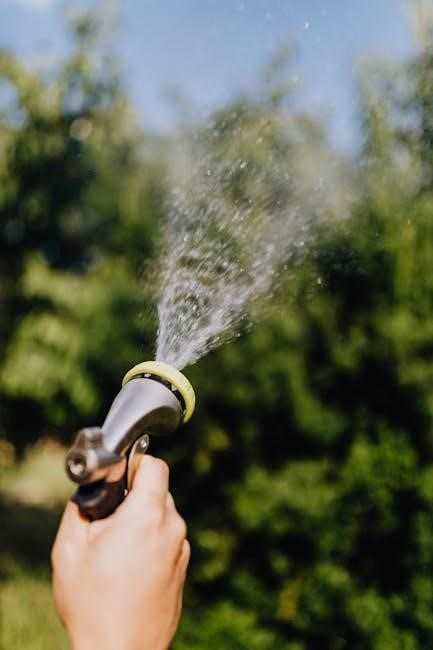
Avionics and Electrical Systems
The avionics and electrical systems are critical for navigation, communication, and flight safety․ Regular inspections ensure functionality, while software updates maintain compliance with evolving aviation standards and technologies․
4․1 Avionics System Inspection
The avionics system inspection ensures all components function correctly, guaranteeing reliable communication, navigation, and flight safety․ Key areas include checking the GPS, communication radios, and navigation systems for proper operation․ Inspect antennas, wiring, and connectors for damage or corrosion․ Test all systems under various conditions to identify malfunctions․ Software updates must be verified for compliance with FAA regulations․ Any issues detected should be documented and addressed promptly to maintain aircraft airworthiness․ Regular inspections prevent system failures and ensure seamless performance during flight operations․
4․2 Common Avionics Issues and Solutions
Common avionics issues in the Cessna 172 include intermittent GPS signal loss, faulty transponder readings, and communication radio static․ Solutions involve checking antenna connections, updating software, and replacing faulty components․ Static issues often stem from wiring or connector corrosion, requiring thorough cleaning or replacement․ Transponder malfunctions may necessitate recalibration or unit replacement․ Regular diagnostics and adherence to maintenance schedules can prevent these issues․ Prompt resolution ensures compliance with safety standards and maintains optimal aircraft performance․ Proper documentation of repairs is essential for future reference and regulatory compliance․
4․3 Electrical System Maintenance
Regular maintenance of the Cessna 172’s electrical system is crucial to ensure reliable power distribution and component functionality․ Key tasks include inspecting circuit breakers, wiring, and connections for wear or corrosion․ Battery health should be checked, with voltage and charge levels monitored․ Alternator belts and tension should be verified to prevent system failures․ Grounding systems must be inspected to ensure proper electrical paths․ Any malfunctioning components should be replaced promptly․ Adhering to the recommended maintenance schedule and using approved tools and materials will help maintain system integrity and prevent electrical-related issues during flight․
4․4 Software Updates for Avionics
Software updates for the Cessna 172’s avionics systems are essential to ensure optimal performance and compliance with FAA regulations․ Regular updates enhance navigation, communication, and flight management capabilities․ Updates often include bug fixes, new features, and compatibility improvements; Technicians should follow the manufacturer’s instructions for downloading and installing updates, typically through specialized software tools․ Proper documentation of update history is required to maintain airworthiness records․ Always use approved data sources to ensure authenticity and prevent system corruption․ Keeping avionics software current is vital for safety and operational efficiency in modern aviation environments․
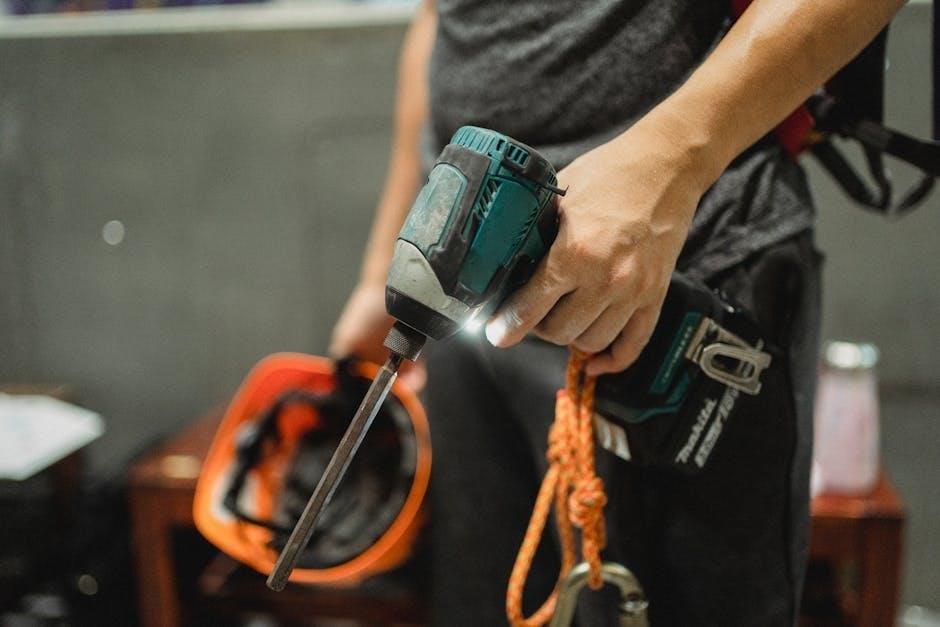
Maintenance Schedules
7․2 Solutions for Frequently Encountered Issues
Common issues like faulty spark plugs, oil leaks, or avionics malfunctions are addressed with routine inspections, timely replacements, and adherence to manufacturer guidelines for optimal aircraft performance․
5․1 Pre-Flight and Post-Flight Checks
Pre-flight checks ensure the Cessna 172 is airworthy, involving inspection of tires, brakes, fluid levels, and control surfaces․ Pilots verify proper function of avionics, navigation lights, and electrical systems․ Post-flight checks include securing the aircraft, inspecting for damage, and documenting issues․ These routines help maintain safety, prevent wear, and ensure compliance with maintenance schedules․ Regular adherence to these procedures is critical for extending the aircraft’s lifespan and ensuring reliable performance during flights․
5․2 50-Hour Inspection Requirements
The 50-hour inspection is a routine maintenance task for the Cessna 172, ensuring safety and performance․ It includes checking engine oil and filter condition, inspecting the propeller for damage, and verifying proper landing gear functionality․ Electrical systems, tires, and brakes are also evaluated․ Control surfaces are tested for freedom of movement․ Any discrepancies must be documented and addressed promptly․ This inspection is typically performed by a certified mechanic and is essential for maintaining compliance with maintenance schedules and ensuring the aircraft remains airworthy․
5․3 Annual Inspection Procedures
The annual inspection is a thorough examination of the Cessna 172 aircraft, conducted every 12 months․ It involves a detailed review of the airframe, engine, and avionics systems․ Technicians inspect control surfaces, fuel systems, and electrical components for wear or damage․ Corrosion checks are performed, and all findings are documented․ Repairs are made as needed to ensure compliance with FAA standards․ The inspection concludes with a certification of airworthiness, confirming the aircraft is safe for operation․ This process is critical for maintaining the integrity and reliability of the aircraft over time․
5․4 Compliance with FAA Regulations
Compliance with FAA regulations is mandatory for maintaining the airworthiness of the Cessna 172 Skyhawk․ All maintenance activities must adhere to federal aviation standards, including Part 91 for general operating rules and Part 43 for maintenance practices․ Technicians must ensure that repairs and modifications are performed in accordance with approved procedures․ Documentation of all maintenance actions is required, and any deviations from standards must be corrected promptly․ Failure to comply with FAA regulations can result in legal consequences and compromise flight safety․ Regular audits and inspections help verify adherence to these critical guidelines․
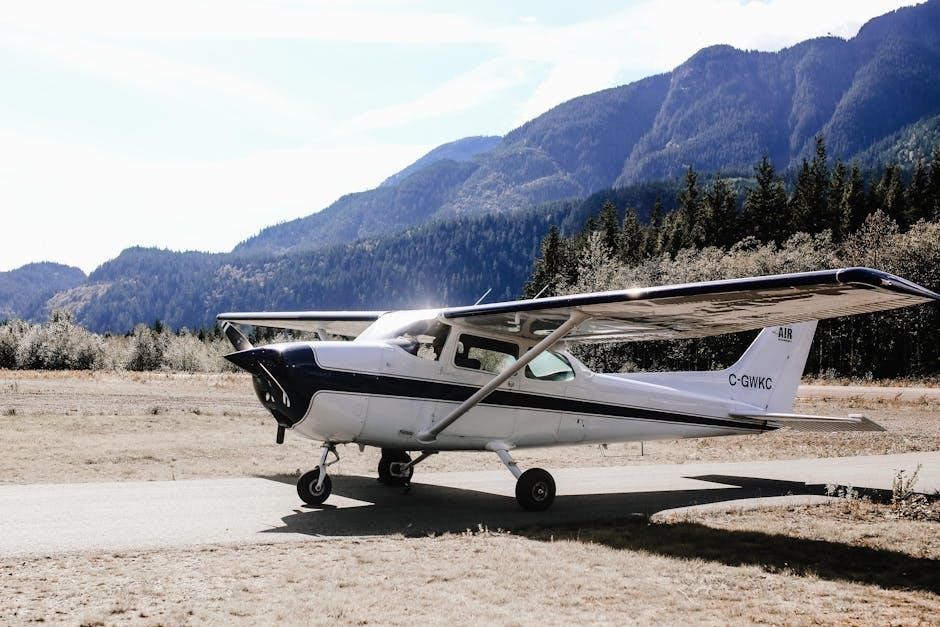
Safety Best Practices
Adhering to safety protocols is crucial during Cessna 172 maintenance․ Always wear PPE, ensure proper tool usage, and maintain clear communication to prevent accidents and ensure a safe environment․
6․1 General Safety Guidelines
General safety guidelines for Cessna 172 maintenance emphasize wearing personal protective equipment (PPE) such as gloves and safety glasses․ Ensure proper tool usage and maintain a clean workspace to prevent accidents․ Always follow manufacturer instructions and adhere to FAA regulations․ Properly secure the aircraft during inspections to avoid movement․ Use jack stands and chocks for stability․ Be aware of hazardous materials and handle them according to safety protocols․ Ensure good ventilation when working with chemicals․ Keep emergency equipment nearby, such as fire extinguishers․ Regularly inspect tools and equipment for damage․ Maintain clear communication with team members during maintenance procedures to ensure a safe environment․
6․2 Handling Hazardous Materials
When handling hazardous materials during Cessna 172 maintenance, always follow proper safety protocols to minimize risks․ Identify materials like fuels, oils, and chemicals, and ensure they are stored in approved containers․ Wear appropriate PPE, including gloves and goggles, to prevent exposure․ Dispose of hazardous waste according to environmental regulations and aircraft manufacturer guidelines․ Keep materials away from open flames or sparks to prevent fires․ Refer to the Material Safety Data Sheets (MSDS) for specific handling instructions․ Proper labeling and segregation of materials are crucial to avoid accidental mixing or contamination․ Ensure all personnel are trained in handling and emergency procedures for hazardous substances․
6․3 Emergency Procedures During Maintenance
In the event of an emergency during Cessna 172 maintenance, prioritize safety and follow established protocols․ Evacuate the area immediately if there’s a fire, spill, or gas leak․ Use fire extinguishers rated for the type of hazard present․ Secure the aircraft to prevent further damage or injury․ Alert nearby personnel and contact emergency services if necessary․ Document the incident and any actions taken for future reference․ Always refer to the maintenance manual for specific emergency guidelines tailored to the Cessna 172․ Proper training in emergency procedures ensures effective response and minimizes risks during maintenance operations․

Troubleshooting Common Issues
Identify and diagnose problems using diagnostic tools and the maintenance manual․ Conduct routine checks and adhere to scheduled maintenance to address issues promptly and ensure safety․
7․1 Identifying and Diagnosing Problems
Identifying and diagnosing issues in the Cessna 172 Skyhawk begins with routine inspections and pilot reports․ Use diagnostic tools and checklists to pinpoint malfunctions․ Consult the maintenance manual for troubleshooting guides and repair procedures․ Pay attention to unusual vibrations, system malfunctions, or performance deviations․ Document all findings and refer to FAA regulations for compliance․ Regular maintenance schedules and logs help track recurring issues, ensuring timely resolution and preventing potential safety risks․ Early detection of problems enhances safety and reduces repair costs․ Always follow structured diagnostic processes to ensure accurate and effective problem-solving․
Common issues with the Cessna 172 Skyhawk include oil leaks, propeller malfunctions, and avionics glitches․ Solutions involve routine part replacements, adjustments, and software updates․ Always refer to the maintenance manual for authorized repair procedures and ensure compliance with FAA standards․ Addressing issues promptly prevents minor problems from escalating․ Use genuine parts and follow recommended maintenance schedules to maintain aircraft reliability and performance․ Regularly updating avionics software and performing thorough inspections can resolve recurring issues effectively, ensuring the aircraft remains airworthy and safe for operation․

Documentation and Record-Keeping
Maintaining detailed service records is crucial for tracking maintenance history, ensuring compliance, and preparing for inspections․ All entries must be accurate, dated, and referenced in the manual․
8․1 Maintaining Service Records
Maintaining accurate and detailed service records is essential for tracking the maintenance history of the Cessna 172 Skyhawk․ These records include pre-flight checks, routine inspections, repairs, and parts replacements․ Each entry must be dated and signed by the technician or mechanic, ensuring accountability and traceability․ Service records also serve as proof of compliance with FAA regulations and manufacturer guidelines․ Proper documentation helps identify trends, plan future maintenance, and prepare for annual inspections․ Organized records are critical for aircraft valuation and resale, demonstrating adherence to safety and operational standards․
8․2 Compliance with Maintenance Documentation
Compliance with maintenance documentation ensures adherence to regulatory standards and manufacturer recommendations for the Cessna 172 Skyhawk․ FAA regulations require all maintenance activities to be documented in accordance with approved procedures․ This includes following the aircraft’s maintenance manual, service bulletins, and airworthiness directives․ Proper documentation validates the airworthiness of the aircraft and ensures operational safety․ Non-compliance can result in legal consequences and compromised flight safety․ Technicians must reference and update all relevant records accurately, maintaining consistency with established protocols to uphold the integrity of the maintenance process and ensure continued airworthiness certification․

Tools and Equipment
Essential tools for Cessna 172 maintenance include wrenches, screwdrivers, pliers, and multimeters․ Specialized equipment like torque wrenches and aircraft-specific tools may also be required for certain procedures․
9․1 Essential Tools for Cessna 172 Maintenance
The Cessna 172 maintenance requires a set of essential tools to ensure efficient and safe servicing․ Basic tools include wrenches, screwdrivers, pliers, and multimeters for routine inspections and repairs․ Specialized tools, such as torque wrenches and aircraft-specific fastener removal kits, are necessary for critical tasks․ Additionally, lubricants, sealants, and cleaning supplies are vital for maintaining aircraft integrity․ A well-organized tool kit, as outlined in the maintenance manual, ensures compliance with FAA standards and streamlines the maintenance process․ Proper tools are indispensable for achieving reliable and consistent results in aircraft upkeep․
9․2 Specialized Equipment Requirements
Maintenance of the Cessna 172 Skyhawk requires specialized equipment to address specific tasks․ Tools like torque wrenches, hydraulic system testers, and avionics diagnostic kits are essential for precise adjustments and inspections․ Aircraft-specific fastener removal tools prevent damage during repairs․ Additionally, equipment such as fuel system testers and corrosion detection kits ensure compliance with safety standards․ These specialized tools are often costly and require training for proper use․ Adherence to the manual’s guidelines ensures that all equipment meets FAA regulations and maintains aircraft airworthiness․ Investing in the right equipment is critical for efficient and safe maintenance practices․
